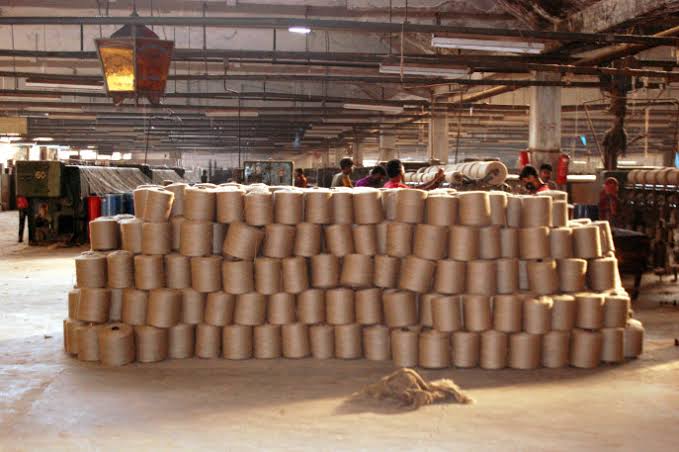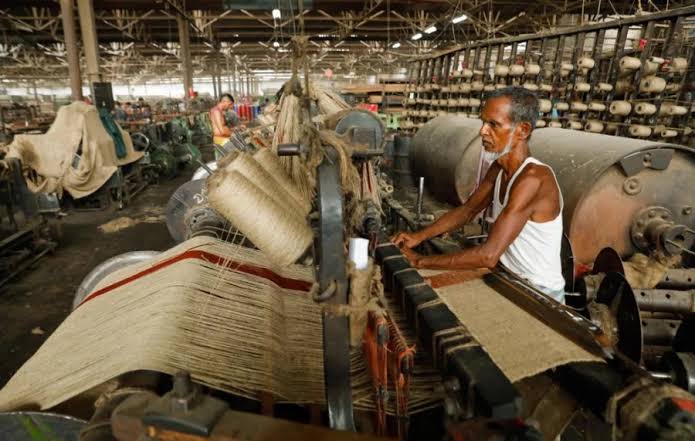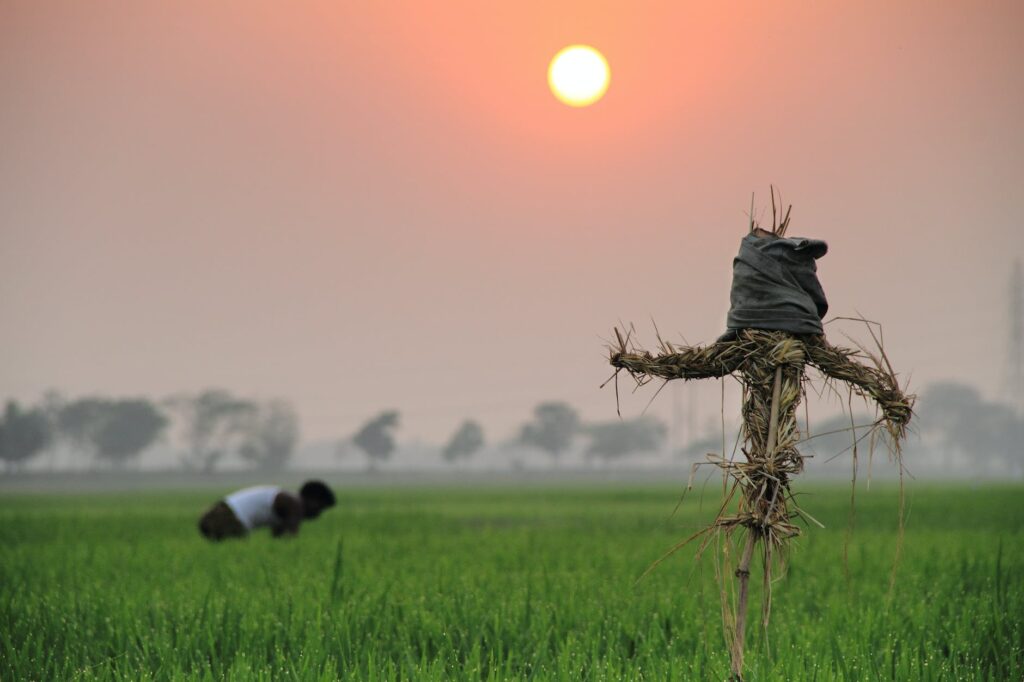Introduction
Exploring the rich history, challenges, and promising future of the jute industry in Bangladesh. Despite past setbacks, innovative research, sustainability trends, and government support pave the way for a resurgence. Collaboration, modernization, and eco-friendly practices offer hope for the industry’s sustainable growth.
Dating back to the period of the East India Company, the jute industry in Bangladesh has played a significant role in shaping the country’s economy. While once a major export item, the industry has faced challenges over the years. This comprehensive overview delves into the history, evolution, and current state of this unique industry in Bangladesh.

1. The Jute Industry in Historical Context
- The pre-colonial and colonial eras saw the emergence of jute cultivation and processing in Bengal, leading to its popularity as a commodity. During an age of global expansion, overseas manufacturing, and sea travel, the versatility and durability of jute fibres made it an attractive cash crop.
- The British Raj showed an interest in jute as an alternative to cotton, resulting in the subsequent growth of jute mills in Kolkata.
- The growth and impact of the jute industry during the World Wars and post-Partition periods were transformative for the economies of countries like India and Bangladesh. During World War I and II, jute emerged as a strategic resource due to its versatility and utility in military applications, including the production of sandbags, tents, and other essential wartime supplies. The heightened demand for jute during these periods led to a significant expansion of the jute industry, with mills operating at full capacity to meet the needs of the war effort. This surge in production provided employment opportunities for thousands of workers, particularly in rural areas, contributing to economic growth and stability.
2. The Post-colonial Era
- Following the partition of India in 1947, the jute industry played a pivotal role in the economic reconstruction and development of both India and Bangladesh (formerly East Pakistan). With the majority of jute mills located in East Bengal (now Bangladesh), the jute industry became a cornerstone of the region’s economy, driving industrialization and urbanisation. The jute trade also facilitated cross-border commerce between India and Pakistan, supporting bilateral trade relations and economic integration.
- Additionally, the jute industry served as a vital source of foreign exchange earnings through jute exports, contributing to the overall prosperity of the newly independent nations. However, the post-Partition period also witnessed challenges such as political unrest, labour disputes, and economic disparities, which impacted the growth trajectory of the jute industry. Despite these challenges, the jute industry remained resilient, adapting to changing market dynamics and emerging as a key driver of economic growth and social development in the region.
- In the post-independence period, efforts towards nationalisation aimed to consolidate control over the jute mills, leading to both opportunities and challenges. While nationalisation sought to ensure state ownership and management of key industries, such as jute mills, it also encountered obstacles such as operational inefficiencies, labour unrest, and bureaucratic hurdles, which posed significant challenges to the sector’s growth and stability.
- During the 1970s and 1980s, government initiatives aimed at privatisation were met with financial struggles within the jute industry. Despite efforts to stimulate private investment and modernise operations, the sector faced numerous challenges, including inadequate funding, outdated infrastructure, and economic instability, hindering its ability to thrive and adapt to changing market dynamics.
- Recommendations from the World Bank to revitalise the jute industry prompted subsequent actions aimed at modernization and restructuring. These efforts included initiatives to improve productivity, enhance technological capabilities, and promote value addition within the sector. By implementing strategic reforms and investment programmes, policymakers sought to rejuvenate the jute industry, foster sustainable growth, and ensure its competitiveness in global markets.
3. Current State and Challenges facing the Jute Industry
- The closure of major jute mills, such as Adamjee Jute Mills, underscores the ongoing financial concerns plaguing the industry. Despite past prominence, these closures signify the challenges facing jute mills, including financial mismanagement, outdated machinery, and labour disputes. The industry grapples with the need for restructuring and modernization to remain viable in the face of evolving market dynamics and global competition.
- Government interventions and policies aimed at bolstering the jute sector include mandates for jute packaging for specific commodities, reflecting a commitment to promote the use of eco-friendly materials and support the domestic jute industry. Such initiatives not only drive demand for jute products but also create opportunities for jute farmers, mill workers, and related industries. By prioritising sustainable practices and domestic production, these interventions contribute to the resilience and long-term viability of the jute sector while aligning with broader environmental and economic objectives.
- The growing interest from the private sector, coupled with advancements in research, underscores a collective pursuit of sustainability in jute production. Private entities are increasingly investing in innovative technologies and practices to enhance the efficiency and eco-friendliness of jute cultivation and processing. Concurrently, ongoing research efforts focus on developing sustainable cultivation methods, improving fibre quality, and exploring new applications for jute-based products. This collaborative endeavour towards sustainability reflects a shared commitment to harnessing the potential of jute as a renewable resource while addressing environmental concerns and meeting evolving consumer demands.
4. Research and Innovation
- The Bangladesh Jute Research Institute (BJRI) plays a pivotal role in driving advancements in jute-related technologies and applications. As a premier research institution dedicated to the development and innovation of the jute industry, BJRI conducts extensive research and experimentation to enhance jute cultivation techniques, improve fibre quality, and explore innovative uses for jute-based products. Through its collaborative efforts with academia, industry, and government agencies, BJRI contributes to the modernization and sustainability of the jute sector, fostering economic growth, and supporting rural livelihoods. By spearheading research initiatives and disseminating knowledge, BJRI remains instrumental in shaping the future of the jute industry in Bangladesh and beyond.
- Global research collaborations and innovations have led to groundbreaking developments in the utilisation of jute, including the creation of jute-based polymers for eco-friendly plastic bags. Through collaborative efforts involving scientists, engineers, and policymakers from around the world, innovative solutions have emerged to address environmental concerns associated with traditional plastic materials. By harnessing the natural properties of jute fibres, researchers have successfully developed biodegradable polymers that offer a sustainable alternative to conventional plastics. These eco-friendly plastic bags not only mitigate the environmental impact of plastic pollution but also contribute to the conservation of natural resources and the promotion of a circular economy. Such advancements exemplify the potential of global research collaborations to drive positive change and innovation in sustainable materials and technologies.
- Potential applications of jute in automobile manufacturing and sustainable fashion industries.
5. Outlook and Future Prospects: 5 Things to Consider
- Despite past setbacks, the jute industry in Bangladesh is poised for a potential resurgence. Increased global demand for sustainable and eco-friendly products is a contributing factor.
- Growing awareness of environmental concerns and the shift towards biodegradable materials present a unique opportunity for jute to regain prominence in various industries.
- Innovations in jute research, such as the development of jute-based polymers and applications in automobile manufacturing, indicate a promising future for the sector.
- Government support through initiatives like the Jute Sector Development Fund and the promotion of jute packaging requirements signals a commitment to reviving the industry.
- Collaboration between public and private stakeholders, modernization of production processes, and adoption of eco-friendly practices can further propel the jute industry towards sustainable growth and profitability.
Conclusion
The journey of the jute industry in Bangladesh reflects a blend of heritage, challenges, and potential for innovation. As the country continues to navigate economic shifts and sustainability trends, the jute sector stands at a critical juncture. With concerted efforts from both the public and private sectors, the industry can rejuvenate and thrive in the modern era. MASK Associates is one of the pioneers in the jute industry in Bangladesh, and we cherish every part of this wonderful journey.
MASK Associates is a leading exporter of top-tier jute and jute-based products from Bangladesh. Our commitment to excellence, innovation, and technology guarantees superior jute sourced from premier fibres globally.



